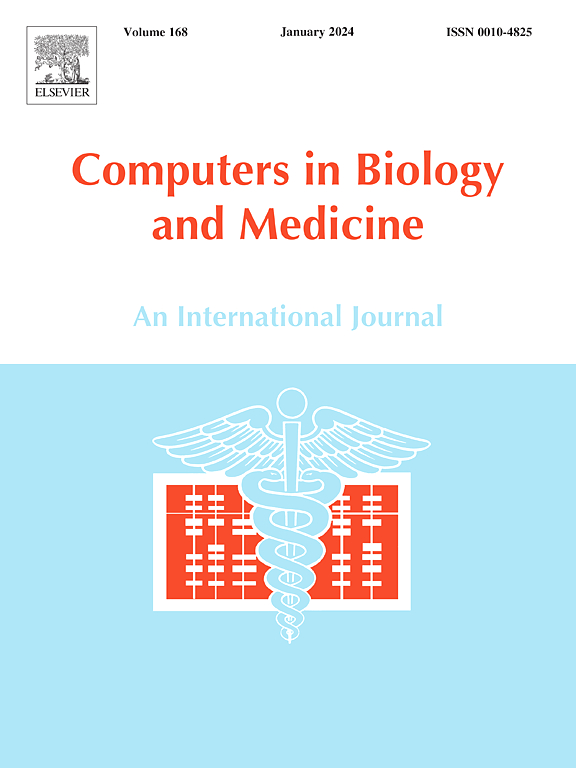乳腺癌诊断中的有丝分裂检测和分类:我们所知道的和接下来要做的
IF 6.3
2区 医学
Q1 BIOLOGY
引用次数: 0
摘要
乳腺癌是女性中第二致命的恶性肿瘤,仅次于肺癌。尽管医学研究取得了重大进展,但通过组织学分析仍然可以准确诊断乳腺癌。在此过程中,病理学家检查物理样本是否存在有丝分裂细胞或分裂细胞。然而,组织病理学图像的高分辨率和人工检测微小有丝分裂核的困难使得有丝分裂细胞与其他类型细胞的区分特别具有挑战性。由于自动化方法的发展和能力的提高,许多研究已经解决了有丝分裂的检测和分类。机器学习和深度学习技术的结合通过提供自动化、精确和高效的解决方案,极大地改变了识别有丝分裂细胞的过程。在过去的十年中,已经提出了几种开创性的方法,在临床环境中推进实际应用。与其他形式的癌症不同,乳腺癌和胶质瘤是根据有丝分裂的数量来分类的。由于易于获取数据集和公开竞争,已经发表了许多关于识别有丝分裂技术的论文。卷积神经网络和其他深度学习架构可以精确地识别有丝分裂细胞,大大减少了病理学家必须执行的工作量。这篇文章检查了过去十年来在组织学染色的乳腺癌苏木精和伊红图像中用于鉴定和分类有丝分裂细胞的技术。此外,我们研究了当前研究技术的好处,并预测了乳腺癌有丝分裂研究的未来发展,特别强调了机器学习和深度学习。本文章由计算机程序翻译,如有差异,请以英文原文为准。
Mitosis detection and classification for breast cancer diagnosis: What we know and what is next
Breast cancer is the second most deadly malignancy in women, behind lung cancer. Despite significant improvements in medical research, breast cancer is still accurately diagnosed with histological analysis. During this procedure, pathologists examine a physical sample for the presence of mitotic cells, or dividing cells. However, the high resolution of histopathology images and the difficulty of manually detecting tiny mitotic nuclei make it particularly challenging to differentiate mitotic cells from other types of cells. Numerous studies have addressed the detection and classification of mitosis, owing to increasing capacity and developments in automated approaches. The combination of machine learning and deep learning techniques has greatly revolutionized the process of identifying mitotic cells by offering automated, precise, and efficient solutions. In the last ten years, several pioneering methods have been presented, advancing towards practical applications in clinical settings. Unlike other forms of cancer, breast cancer and gliomas are categorized according to the number of mitotic divisions. Numerous papers have been published on techniques for identifying mitosis due to easy access to datasets and open competitions. Convolutional neural networks and other deep learning architectures can precisely identify mitotic cells, significantly decreasing the amount of labor that pathologists must perform. This article examines the techniques used over the past decade to identify and classify mitotic cells in histologically stained breast cancer hematoxylin and eosin images. Furthermore, we examine the benefits of current research techniques and predict forthcoming developments in the investigation of breast cancer mitosis, specifically highlighting machine learning and deep learning.
求助全文
通过发布文献求助,成功后即可免费获取论文全文。
去求助
来源期刊

Computers in biology and medicine
工程技术-工程:生物医学
CiteScore
11.70
自引率
10.40%
发文量
1086
审稿时长
74 days
期刊介绍:
Computers in Biology and Medicine is an international forum for sharing groundbreaking advancements in the use of computers in bioscience and medicine. This journal serves as a medium for communicating essential research, instruction, ideas, and information regarding the rapidly evolving field of computer applications in these domains. By encouraging the exchange of knowledge, we aim to facilitate progress and innovation in the utilization of computers in biology and medicine.
 求助内容:
求助内容: 应助结果提醒方式:
应助结果提醒方式:


